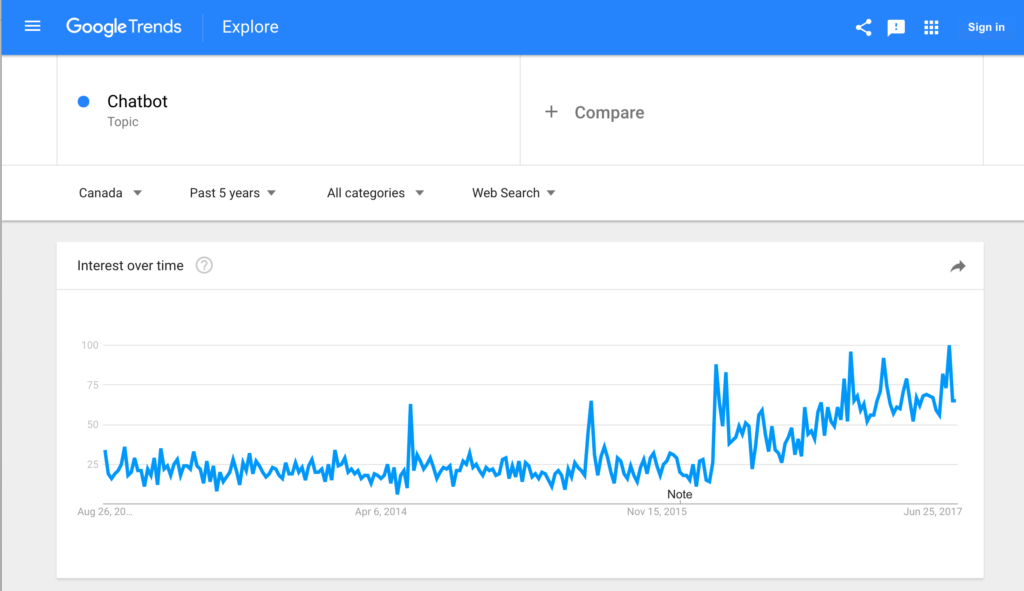Why is Content Frequency so Important?

It can be demotivating to spend precious work hours crafting helpful blog posts that, according to your website analytics, no one sees. Unfortunately, to get noticed online, you need more than great content. You also need to keep a regular update schedule.
We know, we know. Posting consistently, whatever the frequency, is easier said than done. Words might flow through you when you’re organically inspired to write about a certain topic but it can be difficult to force the process. (There are few things scarier to a creative than a blank page). What’s more, with all the content floating around the internet, what’s left to say?
Thankfully, plenty! Whether you’re a student or a seasoned business owner, you have a unique perspective that’s worth sharing. And, in addition to the benefit of spreading of useful information, posting to your website regularly is important for a few reasons:
It increases the chances that someone will see one of your posts. On WordPress, a popular blogging and content management system, users created about 76.3 million new posts in July, 2017. And every year these numbers get higher. Understandably, it can be difficult for users to notice your post in their feed. All too soon it gets buried under competing content. So, the more you post, the more likely someone will happen upon your content.
It impacts your organic search rankings. There isn’t a consensus about whether search engines, like Google, will give new content a temporary boost in search engine rankings. However, you may have noticed that blog pages show up in search engine results, just like the rest of your website. By creating quality blog content focused around relevant business keywords, you increase your chances of having someone click through to your website.
For example, at Tenato we have a popular blog about starting a business in Calgary. Because enough people found it useful, it appears as a first page result on Google for anyone searching for those words. If a business owner finds our advice helpful, there’s a chance that our name will be top-of-mind when they need follow-up help.

It establishes your blog as active. As a business owner, the deluge of content you must compete with can be intimidating. Consumers are also tired of having to sift through the masses to find what’s worthwhile. Consistency in content quality and frequency creates trust with website visitors and can convert them into a blog follower. Once you build an audience, a regular schedule will help them know when to tune in to receive your latest content. Say goodbye to getting lost in the daily churn! Correspondingly, your blog page will experience positive user metrics, like an increase to “time on page”, which will improve its search engine rank.
It gets easier with time. As with anything, practice makes perfect. Setting up a routine time to write and post your blogs can help you get faster and meet your content goals.
Understanding why an up-to-date blog is useful is one thing, but how can you efficiently decide on what content topics, week-after-week or month-after-month, will benefit your blog?
Eight Tips for Developing New Content Ideas

We suggest the following steps to uncover the blog topics to focus on:
1. Identify your audience and determine your blog’s goals. What is the ultimate purpose of your blog? Are you hoping to increase your brand awareness among millennials or do you want your business to be known as a trusted resource for CEOs? Your answer will impact the content that will work for you, including the topic, the publishing platform, and the writing tone. As this is a major step in marketing strategy, for the purpose of this blog, we will assume you have already completed this step.
2. Analyze your most popular blogs. Existing blogs that perform well indicate that a particular topic is resonating with your audience. It’s doubtful that you’ve covered the entirety of the subject in one or two blog posts, so why not discuss the topic from a different angle?
If you’re familiar with Google Analytics, you can find which blogs are visited most by looking at the Behaviour metrics for your Site Content. From there, you can tell if users who visited the blog page went on to read any other pages or if they filled out a contact form. If you don’t have access to your website analytics, you can use other signs of engagement to identify your strongest content. This can take the form of number of comments received or shares on social media.
For example, Tenato’s own Google Analytics reveals that our blog on Market Research Methods is one of the most visited. Therefore, for a follow-up blog topic, we could explain one of the market research methods in greater depth, such as “How to Write a Survey that will Encourage More Completions”.
3. Repurpose your existing blogs into another form. As we mentioned before, repurposing does not mean copy-and-paste. Modifying and re-writing your content to fit different formats, such as infographics, slideshares and listicles, can help present your valuable information in a way that may be more accessible for your audience to share or understand. Once you know what blogs perform the best, they could be great candidates for repurposing.
4. Check your website visitors’ search queries. If your website has been set up with Google Analytics, Search Console and Adwords, you have access to some precious visitor data. While you can’t ask your visitors directly what content they’re looking for, you can view what search queries they used to arrive at your site.
Looking at the Tenato’s Google Search Console Search Analytics, for example, it shows that “promotional mix theory” and “sales training Calgary” are popular queries. If we then review the Tenato blog, we can see that there are only a few blogs on these topics. This suggests that they’d make a great subject for our next entry. (Now you’re getting an idea of what will soon be coming in our blog!)
5. Find out what content is trending. Sharing your thoughts on trending topics is a great way to show your audience that you’re staying informed. Services like Buzzsumo can help you identify the most popular content for any keyword. For a more budget-friendly option, we recommend Google Trends and a news aggregator application, like Feedly.
Using Google Trends, you can search for keywords you’d like to write about and identify whether there has been an increase or decrease in search traffic for this keyword. If the traffic is steady, or if there’s a recent increase, go for it!
With a news aggregator application like Feedly, you need to invest some initial effort to find and follow useful blogs and news sites. This creates a personal news feed related to your industry. Every couple of days you can scroll through this feed for 15 minutes, just to get an idea of what people are talking about. In shouldn’t take too long for inspiration to hit.

Right now, the buzzwords for marketing that keep popping up are “Virtual Reality” and “Chatbots”. A quick check on Google Trends supports an upward trend in chatbots as a topic. Therefore, chatbots would be a good blog topic for Tenato.

If interest in your services or products is impacted by time of year, try to write about a keyword a month or so before the spike in google searches. That way you’ll be well prepared to take advantage of the increase in queries.
6. Showcase your unique perspective. If there are already so many blogs on a certain topic, you might think you have nothing to add. But remember, there’s no one like you. You’re not “just” another marketer or “only” a business owner. Maybe you’re also a singer-songwriter, or a parent, or both! The point is, your one-of-a-kind combination of life experiences helps you look at a subject slightly differently than someone else, even if they work in the same field as you.
Here’s an example from Search Engine Land that I found in my Feedly newsfeed today: “What teen fiction can teach you about writing ad copy.” In this article, the author uses their enthusiastic knowledge of Young Adult literature to put a new spin on the common subject of writing an advertisement.
7. Find the gap in content. Writing on a trendy topic adds your voice to the crowd, but it also means it can be difficult for your content to stand out. Alternatively, there could be subject matter in your industry that isn’t discussed, but is often searched for. For instance, at Tenato we receive a lot of questions from business owners on how to price effectively. However, when you compare it to other marketing topics, like social media, there aren’t many blogs tackling pricing. Providing this content is a great way to satisfy a customer need while proving that your business is a unique resource.
8. Visit online forums for questions. Researching your audience, competition and industry can provide a lot of inspiration for blog post topics. Still, sometimes it’s nice to not have to rely on any guesswork. That’s where browsing online forums comes in. On com, for instance, people create profiles and ask questions on any topic that interests them. Simply search for your industry keywords on quora.com, and you will see pages of potential blog post subjects.

Conclusion
Maintaining a regular blog is tough enough without having to worry about what topic to take on after each entry. Once you have predetermined the subjects for your weekly or monthly blogs, it becomes much easier to narrow it down to a specific title. You’ll also have peace of mind knowing that your content will be timely and relevant for your website visitors. Have any tips to add? We’d love to hear about them!

